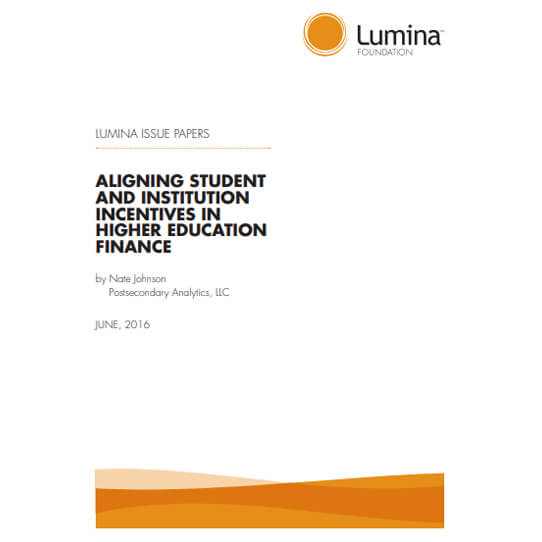In a paper commissioned by Lumina Foundation for a series on outcomes-based funding, Nate Johnson examines the role of institutional and student incentives in higher education finance. Nationally, the primary driver of revenue for colleges and institutions is the credit hour, a measure of short-term student enrollment. Credit hours produce revenue for institutions primarily through the tuition transaction (student payment, with or without financial aid offsets) and in some cases by determining the amount of state funding received as well. This “cash-for-credit” model fosters institutions that can increase revenue through raising prices per credit, increasing student enrollment, or selling more credit hours per student.
Such a financial structure does not, however, provide a sustainable and scalable revenue source for other things that public higher education needs to do—focus on low-income students who cannot afford the full cost, offer courses in technical and scientific disciplines whose costs exceed tuition rates, invest in advising and long-term academic planning, or award credit for what students have accomplished at other institutions or through alternative instructional pathways. As states continue to focus on increasing educational attainment and fulfill the growing technical and advanced workforce needs, policymakers are examining and making changes to the funding system that shapes how they invest in higher education outcomes.
The full text of the paper is available here as well as on the Lumina Foundation website.

